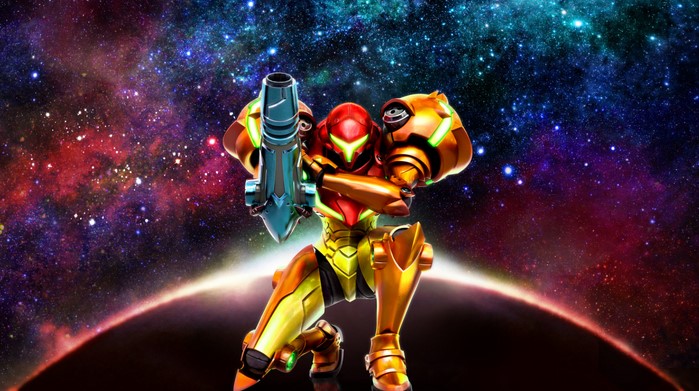
In the world of video game antagonists, few villains stand out as much as Metroid Ridley, the infamous space pirate who has tormented Samus Aran and players alike since the early days of the Metroid series. Ridley is not only a formidable foe in terms of combat but also an integral part of the Metroid storyline, serving as a symbol of evil and relentless pursuit. Over the years, Ridley has appeared in nearly every installment of the Metroid franchise, evolving in both character design and importance. This article delves into the complex nature of Metroid Ridley, examining his origins, his significance within the series, and why he remains one of the most iconic video game villains to date.
The Origins of Ridley: A Villain’s Birth
Ridley’s First Appearance in Metroid
The first appearance of Metroid Ridley came in the original Metroid game released in 1986 for the Nintendo Entertainment System (NES). At the time, Ridley was simply introduced as one of the primary antagonists in the story, a member of the Space Pirates who were responsible for the capture of the Metroids—alien creatures that Samus Aran is tasked with rescuing. Ridley was not initially presented as the complex villain we know today, but his design and role in the game were already solidifying his status as a deadly and persistent adversary.
The character’s first appearance in Metroid set the stage for his later developments. Ridley was introduced as a large, winged reptilian creature with a sinister and fearsome design. His role in the plot was crucial, as he led the Space Pirates’ efforts to exploit the Metroids’ power for weaponization. Ridley’s initial encounter with Samus was challenging but set the stage for the long-standing rivalry that would define both the Metroid franchise and Samus’ character arc.
The Evolution of Ridley’s Design
One of the most interesting aspects of Metroid Ridley is how his appearance and abilities have evolved over time. In the original Metroid, Ridley was a relatively simple character—a large dragon-like creature with no real backstory or personality. However, as the series progressed, Ridley’s design and backstory were refined, making him a more significant and memorable villain.
In Metroid: Zero Mission (a remake of the original Metroid), Ridley’s design was updated with more intricate details and a greater sense of menace. This remake not only improved his appearance but also introduced new lore that tied him deeper into the narrative of Samus Aran’s past. Ridley was no longer just a villain to be defeated, but a key figure in the history of Samus, having personally played a role in the tragic destruction of her homeworld, Zebes.
In subsequent titles, including Super Metroid, Metroid Prime, and Metroid: Other M, Ridley’s design evolved further, showcasing his growth as a more formidable foe. In Metroid Prime, Ridley’s full backstory was expanded, revealing his role as a leader of the Space Pirates and his personal vendetta against Samus. The Prime games introduced Ridley as more than just a boss fight; he became a living embodiment of Samus’ past trauma and her ongoing battle against the forces of evil.
Ridley’s Role in the Metroid Series: A Symbol of Evil and Persistence
Ridley as Samus’ Arch-Nemesis
One of the most compelling aspects of Metroid Ridley is his role as Samus Aran’s arch-nemesis. Throughout the series, Ridley has served as a constant threat to Samus, appearing in multiple games to challenge her both physically and emotionally. Ridley’s repeated reappearances reflect his tenacity and unyielding pursuit of power, making him a fitting rival for Samus, who is determined to stop him at all costs.
In Metroid: Super Metroid, Ridley’s kidnapping of Samus’ adopted daughter, the baby Metroid, marks a turning point in their rivalry. This event propels Samus into a more personal conflict with Ridley, as she must face him not only as a foe but as a symbol of everything she fights against. Ridley’s cruel actions make him more than just a villain—he becomes a representation of the forces of chaos, destruction, and evil that Samus has spent her life combating.
Ridley’s role in Samus’ past is also explored in Metroid Prime, where the player learns of the deep personal history between Samus and Ridley, dating back to her childhood on Zebes. In this sense, Ridley is more than just an antagonist; he represents a deep and personal wound in Samus’ life, a wound that has never fully healed.
Ridley as a Catalyst for Narrative
Beyond his role as Samus’ enemy, Metroid Ridley serves as a key figure in the overall narrative of the Metroid series. His presence is often a catalyst for Samus’ actions, forcing her to confront her past and her emotions while also serving as a significant obstacle in her mission. Whether it’s his control over the Metroids in Metroid Prime or his role in the destruction of Zebes in Super Metroid, Ridley is always tied to the central themes of loss, vengeance, and the fight against overwhelming evil.
What makes Ridley particularly intriguing is his near-invincibility and the fact that he often comes back after being defeated. His survival against all odds, sometimes even after seemingly fatal blows, is a testament to his resilience and the perpetual nature of his villainy. This cyclical nature of Ridley’s return mirrors the eternal struggle between good and evil, with Samus standing as the embodiment of resistance against his forces.
Why Ridley Is One of the Most Iconic Villains in Gaming
Ridley’s Influence on Gaming Culture
Over the years, Metroid Ridley has cemented his place as one of the most iconic villains in gaming. His intimidating design, complex relationship with Samus, and central role in the Metroid narrative make him a villain who stands the test of time. Ridley is not just another boss fight; he is a central figure that defines the Metroid series and its unique atmosphere of isolation, tension, and action.
Ridley’s impact extends beyond the Metroid series, with his appearances in other franchises like Super Smash Bros., where he faces off against Samus in epic battles. His presence in the Smash Bros. games has helped introduce him to a new generation of gamers, further solidifying his place in gaming history.
Ridley’s Lasting Legacy
Even with the advancements in gaming technology and the introduction of new antagonists, Metroid Ridley remains an enduring symbol of what makes video game villains so memorable. His blend of physical prowess, emotional complexity, and iconic design continues to captivate players. Ridley’s ability to return, stronger than ever, means that the rivalry between him and Samus will likely continue for years to come, ensuring that he remains one of gaming’s most enduring villains.
In conclusion, Metroid Ridley is not just a villain; he is a key part of the Metroid experience, representing the ultimate challenge and emotional catalyst for Samus Aran. His evolution as a character, both in design and narrative importance, has ensured that Ridley remains one of the most iconic video game villains of all time. Whether you’re battling him in the heat of combat or exploring the emotional depths of Samus’ past, Ridley continues to be a force to be reckoned with. His unyielding nature, combined with his personal connection to Samus, makes him a figure that is impossible to ignore, ensuring his place in gaming history for years to come. Confronting Ridley is more than just a physical battle—it’s a confrontation with the very heart of the Metroid saga.
